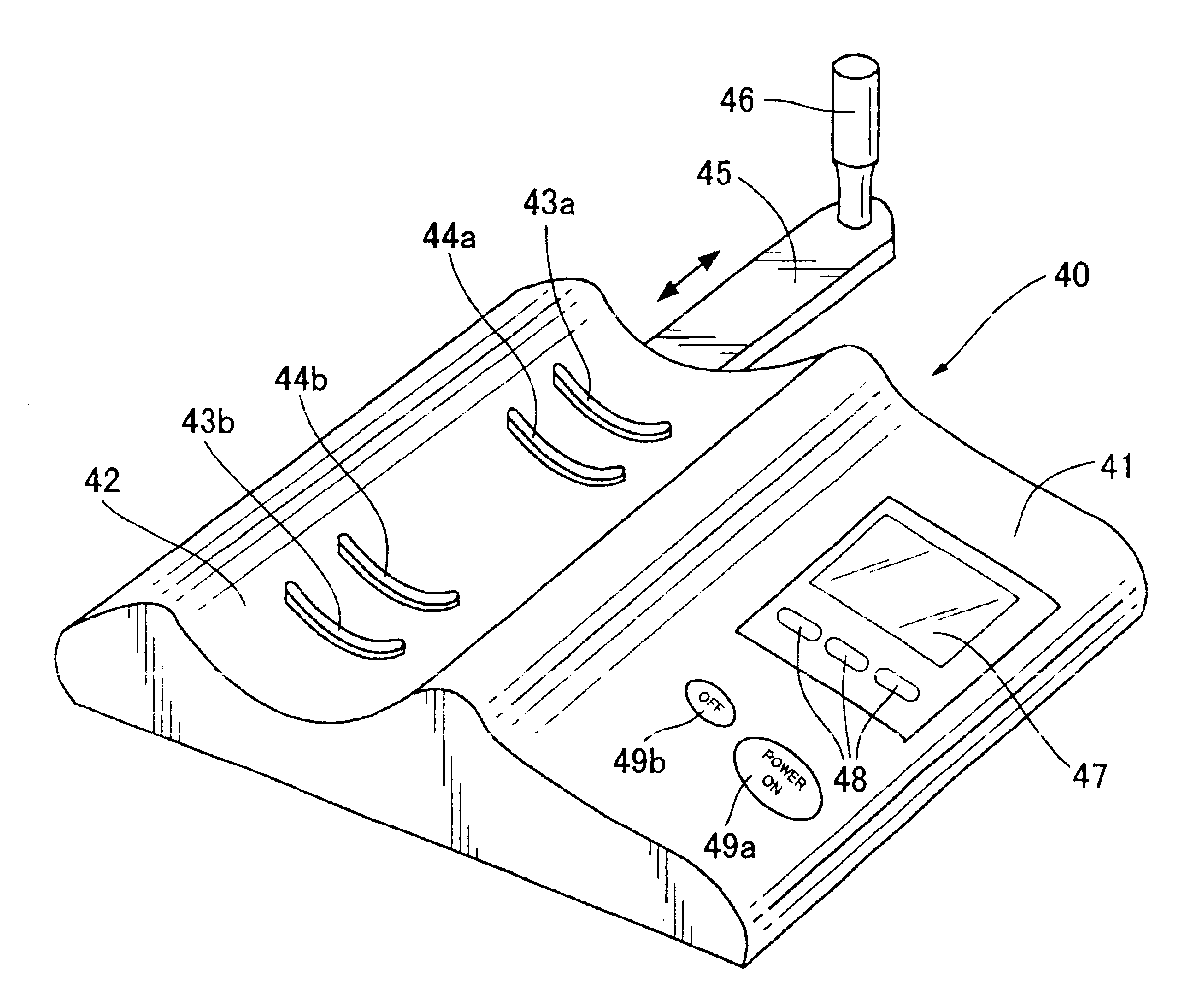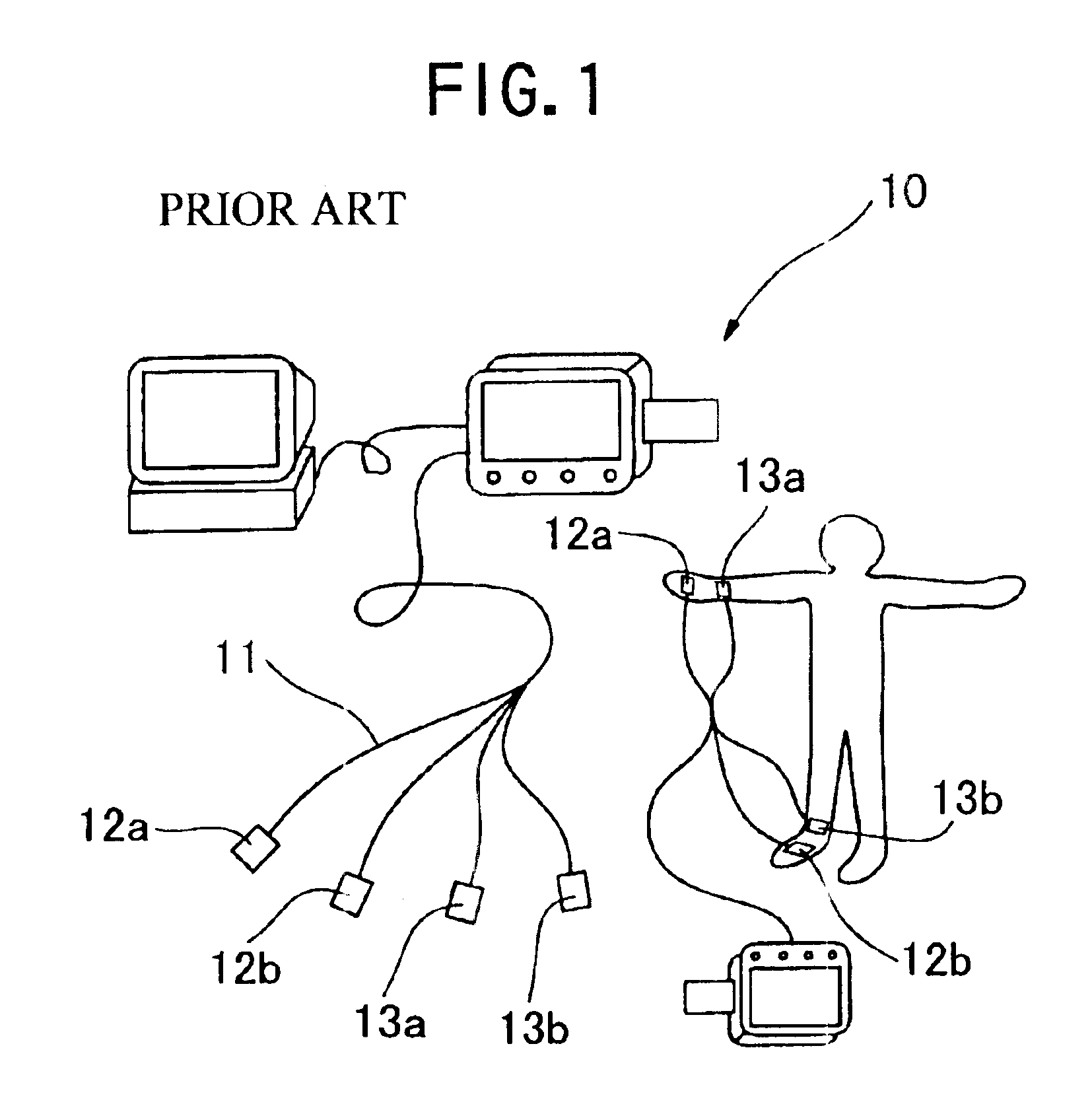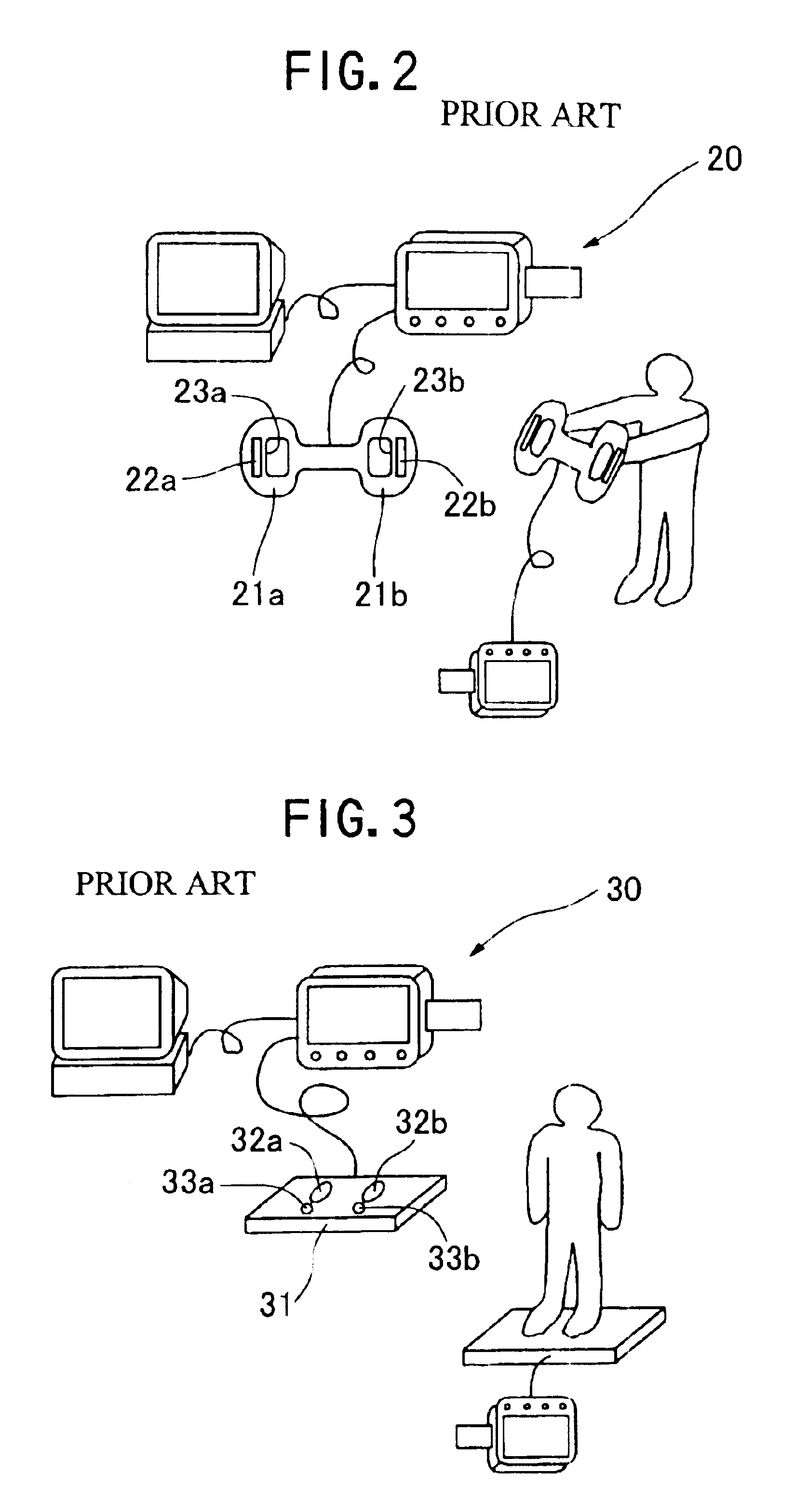Bioelectrical impedance measuring apparatus
a technology of impedance measurement and bioelectricity, which is applied in the direction of diagnostic recording/measuring, instruments, applications, etc., can solve the problems of inconvenient use of electrodes, inconvenient handling of elongated cables, and inability to accurately measur
- Summary
- Abstract
- Description
- Claims
- Application Information
AI Technical Summary
Benefits of technology
Problems solved by technology
Method used
Image
Examples
first embodiment
FIG. 4 shows the external appearance of a bioelectrical impedance measuring apparatus according to the first embodiment as viewed from a user, showing how some parts are arranged on the top of the housing 41. The measuring apparatus 40 is designed to measure the bioelectrical impedance appearing between two points selected on the forearm. The housing 41 is of substantially rectangular-planar shape as a whole. The left side of the housing 41 comprises a forearm rest 42 extending from the front to rear side of the housing 41, and the upper surface of the forearm rest 42 looks like a semi-cylindrical trough. A current electrode 43b, a voltage electrode 44b, another voltage electrode 44a and another current electrode 43a are parallel-fixed on the semi-cylindrical surface of the trough in the order named. Each electrode 43a, 44a, 44b or 43b traverses the longitudinal direction of the forearm rest 42, and the electrode is so curved in conformity with the semi-cylindrical surface that they...
second embodiment
FIG. 12 illustrates the external appearance of a bioelectrical impedance measuring apparatus according to the second embodiment as viewed from a user. In the drawing, the same parts as those shown in FIG. 4 are indicated by the same reference numerals. This measuring apparatus 80 is designed to measure the bioelectrical impedance appearing between two points selected on the forearm as in the aforementioned first embodiment. As shown in FIG. 12, an extendable slider 81 having a flat plate for elbow rest 82 is provided on the front side of the housing 41 as a substitute for the forearm slider 45 of the first embodiment. The slider 81 extends in the direction in which the electrodes 43a, 44a, 44b and 43b are arranged side by side. The elbow rest 82 in this particular embodiment takes the role of the stick-like grip 46 in the extendable slider 45 in the first embodiment. The elbow rest 82 comprises elbow-application piece 82a integrally connected to the semicircular end of the flat plat...
third embodiment
FIG. 13 shows the external appearance of a bioelectrical impedance measuring apparatus according to the third embodiment as viewed form a user. In the drawing, the same parts as those of the first embodiment are identified by the same reference numerals (see FIG. 4). This measuring apparatus 90 is also designed to measure the bioelectrical impedance appearing two points selected on the forearm as in the aforementioned first embodiment. The measuring apparatus 90 is a modification of first embodiment of FIG. 4, which additionally includes a cover member 91. The cover member 91 is pivotally fixed to one longitudinal edge of the forearm rest 42, looking like a semi-cylindrical dome in its closed position and extending in the direction in which the electrodes 43a, 44a, 44b and 43b are arranged side by side. Preferably the cover member 91 can be rotated about its pivot axle with counter friction large enough to cause the user to feel some pleasing resistance when he raises his forearm. T...
PUM
 Login to View More
Login to View More Abstract
Description
Claims
Application Information
 Login to View More
Login to View More - R&D
- Intellectual Property
- Life Sciences
- Materials
- Tech Scout
- Unparalleled Data Quality
- Higher Quality Content
- 60% Fewer Hallucinations
Browse by: Latest US Patents, China's latest patents, Technical Efficacy Thesaurus, Application Domain, Technology Topic, Popular Technical Reports.
© 2025 PatSnap. All rights reserved.Legal|Privacy policy|Modern Slavery Act Transparency Statement|Sitemap|About US| Contact US: help@patsnap.com



